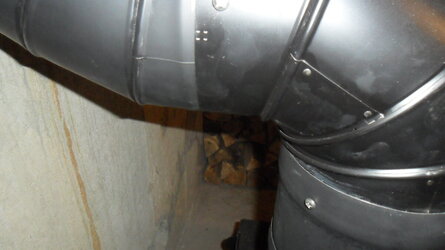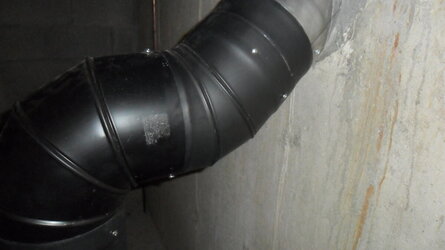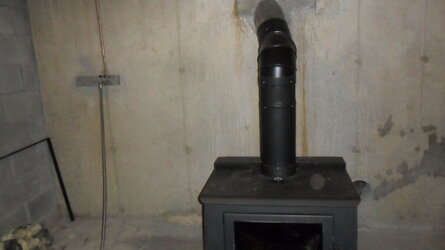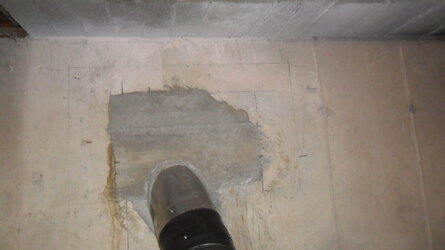kennyp2339
Minister of Fire
We tried telling you in the beginning of your thread.. I'm learning that slow-burning cat stoves are incredibly sensitive even more than I thought to draft, pipe insulation, wood quality,
We tried telling you in the beginning of your thread.. I'm learning that slow-burning cat stoves are incredibly sensitive even more than I thought to draft, pipe insulation, wood quality,
I can easily remove that extension and bring the chimney cap back down near the chimney top level, just a few screws to remove. What is the code restriction for how much a pipe can extend above chimney top level? Is three feet too much? What is the limit in the code? Note that the place selling me the pipe recommended extending the pipes further above chimney level to improve draft performance. They said when they are extended above a certain height they require special bracing that they also sell, so I know it is being done in some places. My greenhouse stove pipe also extends quite a bit above the greenhouse, and would that violate code?Those extra 3 ft are not a good idea; coldest place with worst pipe. (It's also against code.)
Is the pipe where you put your hand single wall? Being able to put your hand on single wall in your basement is not good. On double wall, I can, depending on how high the Tstat is (i.e. on flue temps). If I'm running low, the flue temps are near 300-350 F and I can put my hand on the double wall pipe I have. Running a bit higher, I can touch it, but don't want to leave it there..
No precipitation in the last 24 hours and the chimney pipe has a cap.Hm.
The 12 hrs is a concern we can discuss later.
Re: The water. No precipitation outside in the last 24 hrs?
Note that *any* burning will send many pounds of water thru the flue - the result of perfect combustion of any organic compound containing only carbon and hydrogen will be CO2 an water. See here:
Steam coming from chimney
Hey everyone, I have what is obviously steam coming from my chimney on cold low humidity days. I haven’t measured moisture content of my splits recently but I do know they are about a year from perfect (MC had been 19-22%) Is this a sign of wet wood when running a cat stove? Or can this be...www.hearth.com
Maybe your flue seam opens up when you heat it up.
Regardless, it's too cold if water drips - water should be vapor in your flue.
Do you remember this statement?I just checked the stove again for the dripping. Sure enough it is doing it now, even with pallet wood and 2X4 pieces, all completely dry from the barn, from a rack off the floor, been in the barn for years, never wet. I put in only three small thin pieces of my split cordwood this time, all with no bark and from the face of the stack near the stove, sure to be either fully dry or the driest that I have.
The stove had burned down to coals before I reloaded (so much for "+40 hours" on a full load, it's not even twelve hours, and the termperature control knob was set low, at the very beginning of the white band, as usual) and remember, the dripping only happens at the beginning after a re-load, then it stops, so there was no dripping since last night, and now it starts again after I re-loaded with wood that I know HAS to be dry.
Maybe no matter how dry the wood is, the stove still extracts moisture and it will collect and show itself at the bottom of that seam on the horizontal. Maybe the uninsulated two-foot passage through the wall is condensing the moisture and it runs down there. I understand that even a trace of moisture will rust this stove, so it must be stopped. I may stop burning the stove if it happens again with one more load of ALL 2X4 and pallet pieces.
(1) I haven't had any problem with smoke spillage. Each time I open the door to reload there is no back-puffing, well only once that I remember when I swung the door open very fast and practically sucked some out. But no, there is no smoke spillage. Before I installed the stove I was doing negative pressure tests on the chimney pipe for a few days and there was usually a very faint downdraft, but that was easily reversed with a hairdryer for a few seconds and even stayed reversed for quite a while.Do you remember this statement?
Second was the performance part of the discussion. Smoke spillage as a result of insufficient vertical rise, thermostat responsiveness to radiant heat off surrounding solid (masonry) structure. We discussed drilling a hole higher up on the chimney and you reminded me of the short ceiling height. This stove is not going to work for your installation.
I'm thnking the way you are. The stove is always set at the lowest temp, and I was afraid to set it higher because the cat thermometer on the stove top goes all the way up the white band and even a little over it. But the BK manual says to always set the temperature control knob all the way up for about 30 minutes after reloading to "condition the load." So when I reloaded tonight I tried that (I set the temperature control knob all the way up, to the end of the white band) and came back in about a half hour to findto my horror that the needle on the cat thermometer was at six o'clock, as far beyond the white band as it is possible to get. I immediately turned the control knob back, and I noticed it was a bit hard to turn. The needle started to drop slowly. I went back to check ten minutes later and it's still not quite back to the white area. That's the bad part. The good part is that no liquid came out of the seam on the angle fitting with this load, and the pipe going into the wall is really hot for the first time.Sounds like condensation is an issue, cooler then normal flue temps are warm the inside of the pipe and with the colder wx we are seeing the inside is condensing and dripping back to the stove.
There is much more than the required minimum clearance of 6." It is 10" away from the wall and there is plenty of open space all around the stove. The concrete wall is warm, and has been warm, near the stove as you would expect after days of burning. There is a fan running nearby force-drying a stack of split cordwood, so there really isn't any trapped still hot air lingering near the stove. The basement air temperature is about 70 degrees and higher near the stove.A stove running too cool might be due to the Tstat being too hot. What are your clearances to the back and side (and as I don't want to look up the manual, what is required)?
There's another thread where very trace amounts of moisture leaked from venting and have compromised the top of the stove.
But did your BK cat temperature ever go to six o'clock? The needle can't go any higher on the guage, so who knows what temperature it really reached. It was a half hour from re-loading when the needle was in the middle of the white area, and I set the temp knob High, at the end of the white band, for the first time ever. I was always watching the needle on the cat temp guage, and going by that. I figured if the cat was reaching the end of the white area the it was getting too hot regardless of whether the pipe going into the wall wasn't too hot to touch.as noted before, any new cat is hyperactive. This has happened to all of us. It has not resulted in problems as far as I know.
Now, the "conditioning" is to bake out remaining moisture. For dry (pallet) wood, there is much less of that. I do believe (based on my own playing around) that the wood nicely blackened is what makes a long and low burn stable.
As I noted before, *every* burn produces loads of water. See my back of the envelope calc in that post I linked to. Many assumptions (pure cellulose, perfect combustion, etc) but the point is many pounds of water are produced in your stove. If your pipe is too cool, it condenses.
Given that the clearance (Tstat overheating) seems ok, I think a major issue you have is that you did not run hot enough. Initially at least (the conditioning).
Finally, the Tstat *does* (if it works properly) limit the heat, but it does *not* shut the air completely. When setting it on high, it *will* result in a good amount of flames etc. It just won't make it more than it should be.
While I of course can't say that it worked or it did not work, I think your understanding ("So much for...") is not correct.
It's not really a masonry chimney. It's rigid stainless lined chimney insulated with vermiculite cement. Two inches of vermicuite cement is supposed to be equal to the blanket insulation that is used around flexible liner. The vermiculite cement thickness varies from 1 to 3 inches around the pipe. The recipe was heavy on the vermiculite, minimal amount of Portland cement, and it was mixed by hand to keep it loose. I helped it to fill all the spaces by using vibration and a long rod.The thermostat does not monitor the cat temperature. It’s purpose is not to regulate cat temperature. The thermostat is driven by stove temperature which can be quite low even when the cat is quite hot.
I think you’re running this thing too cold and the condensation running down your flue is because your masonry chimney is cooling the flue gasses below the condensation point.
The vermi-cement is outside the pipe and has no contact with the exhaust. It's just the moisture in the exhaust condensing. Maybe its not really an extreme amount of moisture but looks like a lot because most or all of it happens to be visible, instead of draining invisibly back to the stove. It happens to be collected where the chimney pipe meets the short section of horizontal stove pipe, and released (into a metal container I put below) drop by drop from the bottom of a seam in an adjustable fitting that created the horizontal.Wonder if some of this water is from cooking/baking your concrete/vermiculite mix?





